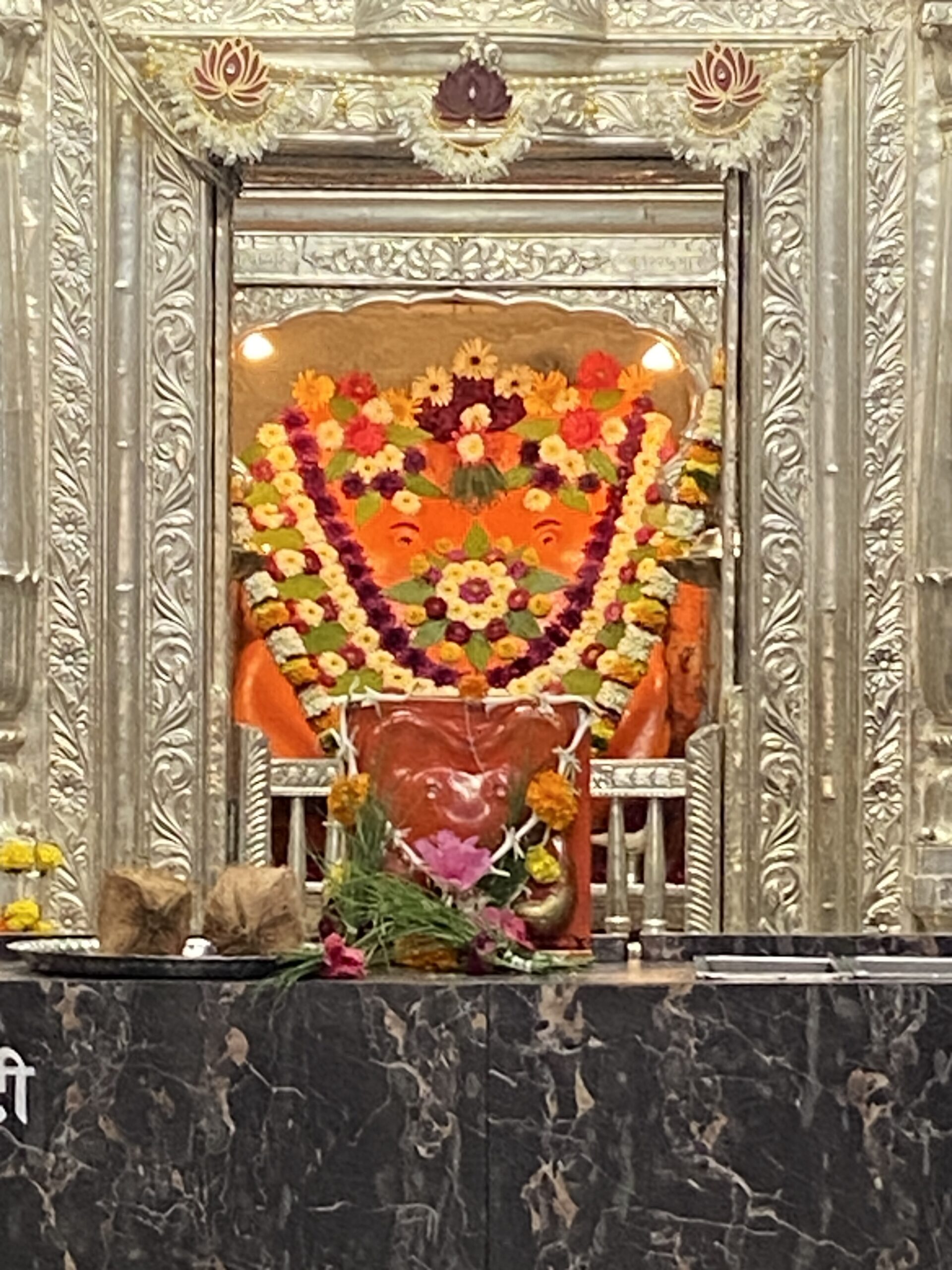Introduction: Nestled in the heart of Pune, the historic city of Maharashtra, stands a temple that holds immense significance in the cultural fabric of the region. Kasba Ganapati, often referred to as the Gram Daivat (Village Deity) of Pune, is a true testament to the city’s rich heritage and deep-rooted devotion. Join us on a virtual journey as we unravel the enchanting tale of Kasba Ganapati, a crown jewel that shines brightly in Pune’s temple heritage.
Origins and Reconstruction: The history of Kasba Ganapati dates back centuries when it was originally reconstructed by the illustrious Jijabai, the mother of the legendary Maratha ruler, Shivaji. Under Jijabai’s patronage, the temple gained prominence and became a focal point of worship. Subsequently, during the reign of the Peshwas, the outer structure of the temple was meticulously crafted, giving it the exquisite architecture that stands today.
Architectural Splendor: As you step into the premises of Kasba Ganapati, you are greeted by a mesmerizing display of intricate carvings, ornate pillars, and stunning architectural details. The temple’s façade showcases a harmonious blend of Maratha and Peshwa architectural styles, reflecting the grandeur of an era long gone. The elaborate peacock motifs, banana flower embellishments, and banana leaf arches adorning the temple walls add an aura of opulence and divine grace.
Religious Significance: Kasba Ganapati holds immense religious importance for the people of Pune. Considered the Gram Daivat of the city, this temple is revered as the presiding deity, protecting and blessing the locals. Devotees flock to Kasba Ganapati to seek blessings, especially during the auspicious festival of Ganesh Chaturthi when the temple comes alive with fervent celebrations and elaborate rituals. The air is filled with devotion and the resonating chants of hymns dedicated to Lord Ganesha.
Cultural Legacy: Beyond its religious significance, Kasba Ganapati stands as a testament to Pune’s cultural legacy. The temple’s history intertwines with the illustrious Maratha Empire and the Peshwa era, highlighting the city’s rich past. It serves as a symbol of pride, representing the glorious heritage and the indomitable spirit of the people of Pune.
Spiritual Experience: Visiting Kasba Ganapati is not merely a sightseeing endeavor; it is a spiritual experience that leaves a lasting impression on every visitor. The tranquil ambiance, the fragrance of incense, and the rhythmic sounds of devotional chants create an atmosphere of serenity and introspection. The divine presence of Lord Ganesha permeates every corner, instilling a sense of peace and reverence.
Preserving the Heritage: Today, Kasba Ganapati stands as a beacon of devotion, a reminder of Pune’s glorious past. Efforts are continuously made to preserve the temple’s heritage, ensuring that future generations can witness its magnificence and connect with the city’s cultural roots. The temple’s sanctity is upheld through regular rituals and celebrations, keeping alive the legacy of faith and spirituality.
Conclusion: Kasba Ganapati, the Gram Daivat of Pune, is a jewel that shines brightly in the city’s temple heritage. Its rich history, architectural splendor, and religious significance make it a must-visit destination for both devotees and history enthusiasts. As you bow your head in reverence before the divine idol, you can’t help but feel the profound sense of spirituality and the deep connection to Pune’s illustrious past. Let Kasba Ganapati guide you on a journey of devotion and enlightenment, as you embrace the essence of Pune’s cultural heritage.



